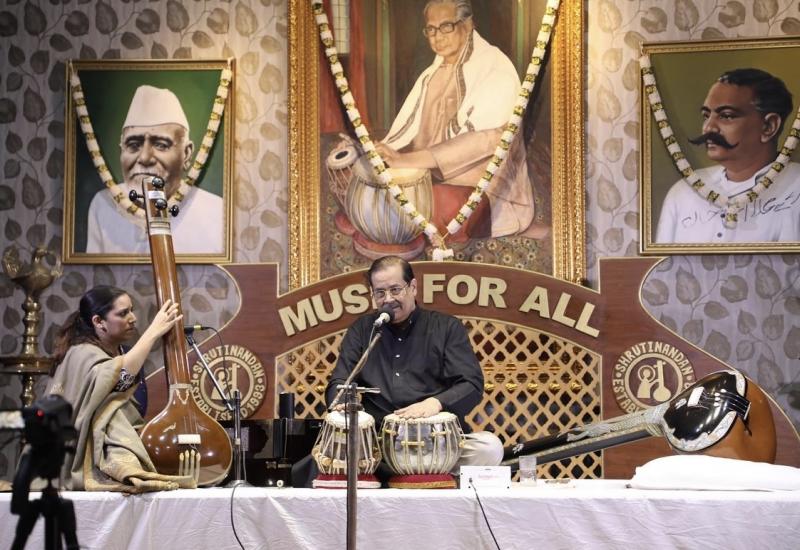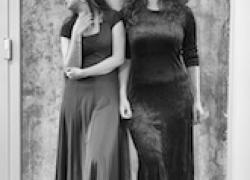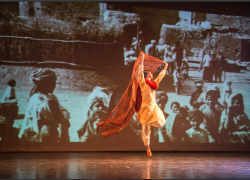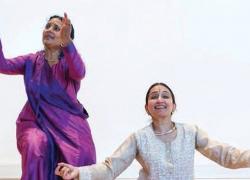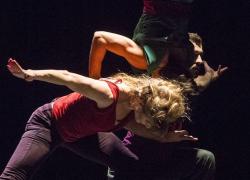In Conversation with Jaivant Patel
Jaivant Patel has had a meteoric rise in the world of dance since his graduation from Northern School of Contemporary Dance in 2004. Kathak came into his life post-graduation, from the legendary Nahid Siddiqui, and has become his principal medium of expression. But it was after he found his artistic voice in expressing narratives of the South Asian Queer experience that the path of progression opened up for him.
On Tuesday 14 April Jaivant brings his Waltzing the Blue Gods to The Place Theatre, for its first London showing. Waltzing the Blue Gods reimagines the Queer symbolism of Hindu gods Shiva and Krishna and the role they played both in his sexual awakening as a homosexual man and in his relationship to faith.
Pulse talked to Jaivant Patel about his background, his inspirations and what he hoped to achieve with his new show.
1. Did you dance as a child and who or what was your biggest influence?
I think when you grow up in an Indian household dance and music are things you connect with from the very beginning. However, If I really think about my first conscious connection to dance then it would have to be with Garba and Dandiya Raas (folk dances from Gujarat) during the Navratri festival.
My biggest influence at the time was watching anything to do with Hindi cinema of the 40s/50s/60s/70s. My grandad used to love watching old movies and I remember from an early age being fascinated with movies such as Mughul-E-Azam, Sholay and Pakeezah to name a few. Meena Kumari and Helen remain some of my biggest influences.
2. How was the experience of studying at Northern School of Contemporary dance and when did kathak enter your life?
I had never undertaken any formal dance training until I started studying at NSCD. I simply auditioned and was awarded a place because of my potential. I had always wanted to learn to dance from a young age but was never supported to do so because of the lack of resources in Wolverhampton, i.e. classes, together with the expectation of a career that comes with growing up as a British South Asian.
When I finally was able to choose my path and pursue my dream to become a professional in dance, I chose to audition in places like NSCD and other similar institutions. What I became aware of quickly was the lack of South Asian faces training in mainstream dance schools. I believe representation is still lacking today.
I had always wanted to learn kathak, and it wasn’t until some years after I graduated that an opportunity came up to learn from Nahid Siddiqui at Midlands Arts Centre, whilst I was an Artist-In-Residence there for a project, prior to becoming an Associate Company of the venue.
3. Your profile has risen steadily in the last decade and you have a dance Company that is on the Arts Council National Portfolio. To what do you ascribe your spectacular success? What were the difficulties that you had to face?
I would say that the success of any company is measurable based on its own goals and ambitions. We have achieved what we have because of our desire to draw investment to be able to create work beyond the stereotypes attributed to South Asian dance and speak to the marginalised intersections present in British South Asian identities and lived experience.
I would be lying if I said I hadn’t had to face any difficulties. However, without dwelling on this too much, situations that have occurred demonstrate the need for more work of this kind to educate and encourage open conversations about the South Asian Queer community and its need for equality.
JPCo’s mission statement is rooted in ‘The JOYFUL RE-IMAGINING of BOLD human stories.’ This speaks volumes about the type of work we want to create with the narratives we choose to be inspired by.
4. Although we have several South Asian dancers who would acknowledge their LGBTQ+ identity, you are the first to set up a Company that addresses experiences of the LGBTQ+ community. Would you like to comment on that?
The artistic professional touring work of the company currently is focused on South Asian Queer narratives, yes. By creating this type of work, I hope to open further conversations to better understand the South Asian LGTQIA+ community.
I hope it will also empower other Queer creatives to create South Asian LGBTQIA+ performance work. I say this as recently I have seen examples of work where cis-gendered choreographers have used the experiences of the South Asian Queer community to tell narratives, which I believe aren’t theirs to tell as the lens of hierarchy is displaced and doesn’t actually empower the queer artist at the forefront of the work.
It’s also important to talk about venues and programmers in this context who don’t traditionally programme work of this nature, as it is seen as a ‘risk’. A ‘risk’, I believe, is important in reflecting the communities they serve and should be representing.
JPCo is also currently working on a new work entitled 'Astitva', to contribute to this impact. 'Astitva' will be a piece choreographed by myself on three dancers talking about the experience of South Asian homosexual men.
5. We are looking forward to Waltzing the Blue Gods coming to The Place, London on Tuesday 16 April. What do you hope the audiences will take away from the show?
Instead, I would like to tell people why they should come and see the show….
First, no doubt the title and subject matter of the work will stir opinions around the morality of LGBTQ+ lives and existence, especially within South Asian communities. I would encourage anyone questioning this to attend and challenge their own biases to engage with the dialogue being presented in constructive ways.
Secondly, I would ask all Queer allies to support the amplification and representation of South Asian LGBTQIA+ bodies so that other authentic British South Asian Queer work is made.













